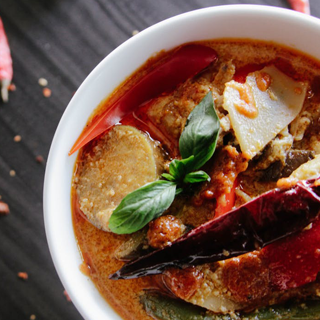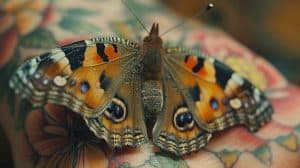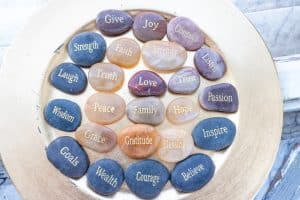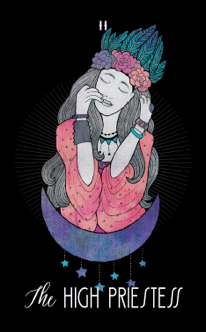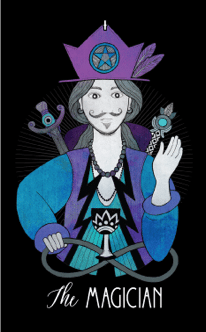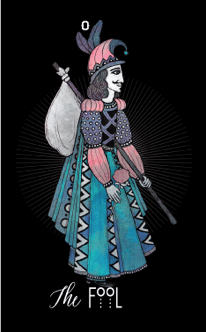From ancient times, man has sought ways to improve his potency in bed, and women have pursued potions to render themselves irresistible to the various objects–male or female–of their affections. While love potions may conjure up images of sorcery, courtly love, and days of yore, modern science continues to produce data to support the idea that certain foods actually are a boon to both the enhancement of attraction and the enjoyment of sensual pleasures.
The history of aphrodisiacs (so named for the Greek Goddess of Love, Aphrodite) includes some pretty far-fetched and downright dubious “food” items–because frankly, to call some of these things “food” is really stretching the definition of the word. Sparrow brains and tongues, blister beetles (more commonly known as the “Spanish Fly”), ambergris from whales, skink lizards, rose pudding (made from flower petals) and wine-soaked lilies, cobra’s blood, balut (a boiled fertilized duck egg with embryo), fugu (a.k.a., deadly blowfish), elephant dung, tiger’s penis and baboon urine have all been either ingested or applied in a topical form in attempts to boost libido and give Cupid better aim with his arrows.
In times past, many foods were thought to be aphrodisiacs simply because they were scarce. For example, when potatoes first made the trek from the Americas to Europe, they were elevated to the status of “spuds of love” due to the fact that only the elite could enjoy them. But as their availability increased to the point at which they became a preferred food of the peasantry, the potato’s allure as an aphrodisiac waned.
Truffles, too, have long been lauded as romance enhancers, but again, their reputation for amoré is more likely due to the scarcity of the expensive and elusive fungus rather than any romantic effect the chemical compounds they contain might produce[1].
The Unavoidable Oyster Issue
So, what about oysters, you ask, since the bivalve mollusk is usually found at the top of every top ten list of aphrodisiacs?
Served at Roman orgies, and endorsed by the likes of Don Juan and Casanova, some theorize this veritable Viagra-on-the-half-shell resembles female genitalia, and is therefore stimulating to the act of love. (Ew?) However, it’s more likely their potency lies in the powerful punch of rare amino acids D-aspartic acid (D-Asp) and N-methyl-D-aspartate (NMDA) oysters and other bivalves pack.
In lab experiments (with rats), injections of these substances triggered progesterone production in females and testosterone in males. Since hormonal components are integral to increased sexuality…well, you draw the conclusion.
Menu for the Modern Cupid
But slimy bivalves, no matter their romantic efficacy, aren’t to everyone’s taste. Fortunately, we’ve gathered a list of more palatable and scientifically proven foods for love that you can work into your plans when romance is on the menu.
Chocolate
Nothing new here: cocoa has been cited as an aphrodisiac for centuries, only now there’s science to back up what chocolate lovers have always known. The name Theobroma cacao, the trees from which chocolate is sourced, translates to “cacao, food of the gods.” The ancient Maya used the beans as brothel currency, and cocoa legend also has it that the Aztec emperor Montezuma drank upwards of 50 cups of chocolate daily to maintain the sexual stamina required to satiate his myriad wives.
According to scientists, chocolate contains two chemical substances that aid in passionate pursuits: phenethylamine, a stimulant associated with the act of falling in love; and tryptophan, a catalyst to the production of serotonin, the brain chemical associated with elevated moods and sexual arousal. And did we mention it tastes beyond great?
Vanilla Bean
As early as the 1700s, the vanilla bean was being touted by medical professionals of the day as a male performance enhancer. In fact, in a 1762 thesis, “On Experiences,” German physician Bezaar Zimmermann cited “no fewer than 342 impotent men, by drinking vanilla decoctions, had changed into astonishing lovers of at least as many women.”
The vanilla love affair continues with Founding Father Thomas Jefferson. After returning from his gig as Ambassador to France in 1789, Jefferson almost immediately sent an urgent request to his French attaché for the vanilla pods to which he’d become accustomed (that were as yet unavailable in America). Jefferson, who had a reputation for sexual prowess (among other things), recommended the passionate pod for many applications, from the flavoring of ice cream to use as an aphrodisiac.
In the mid-1990s, neurologist Alan Hirsch, of the Smell and Taste Treatment and Research Foundation in Chicago, conducted tests to distinguish the connection between the sense of smell and sexual arousal. Volunteers wore masks infused with a variety of aromas, several of which were found effective in increasing tumescence. But of all the scents mature men tested, vanilla had the absolute highest potency[2].
Watermelon
The watermelon, native to the continent of Africa, has been cultivated in the Nile Valley as long ago as the Second Millennium B.C. Watermelon seeds have even been found at the tombs of such notable Egyptians as Tutankhamun.
It’s likely that the ancient Pharaohs were clueless as to why the sweet red fruit enhanced sexual performance, but some modern scientists liken it to “natural Viagra.” Watermelon contains large amounts of the phytonutrient citrulline. When digested, citrulline is converted to an amino acid called arginine, which relaxes blood vessels and improves cardiovascular and immune functions. (Since the highest concentration of citrulline is actually found in the rind of the watermelon, if you’re a culinary aficionado, you might want to test out a few recipes for watermelon pickles.)
Pomegranate
When Eve reached for that forbidden fruit, many scholars argue that it wasn’t an apple that caused the ruckus that got the seminal pair booted from Eden, it was a pomegranate. Whatever the case, the fruit certainly got around. In Greek mythology, Aphrodite, the mother of all aphrodisiacs, is credited with planting the first pomegranate tree, and Persephone found herself bound to Hades after eating only a few seeds.
In a 2011 study by Edinburgh’s Queen Margaret University, it was determined that a daily dose of pomegranate juice reduced levels of cortisol (which lowers stress) and increased levels of testosterone in both male and female study participants, which may result in increased sexual desire in both sexes. While there’s no hard data, pomegranate proponents also posit that thanks to its high levels of antioxidants, consumption of the red fruit may also up genital sensitivity–but in a good way.
Chili Pepper
As recently as the 18th Century in Europe, many aphrodisiac concoctions were based on the recipes of the great Roman physician Galen. Galen had a penchant for potions that favored foods that were “warm and moist” and also “windy,” meaning gas inducing. Galen may have been laboring under the mistaken belief that flatulence could inflate a limp male member, but some of his science has been since proven true.
One ingredient Galen championed for bedroom bounty was spice, including chili peppers. Peppers contain the naturally occurring chemical capsaicin, which serves several arousing functions: raising the body temperature, increasing blood flow, and stimulating the release of endorphins. In addition to that trifecta, capsaicin naturally plumps the lips and causes the skin to flush, both of which send subliminal signals that suggest your pump is primed and ready for action.
Whatever dish you plan on cooking up, using these ingredients might just get you ready for cooking up a little something else, as well. Enjoy.
Food for love is a great way to get romance off to a good start, but food for thought can help you find the recipe for winning relationship, too. Get cooking with some hot advice from a KEEN advisor today!
Click to See Our Infographic on the Science of Summer Love
1. http://napatrufflefestival.com/truffles-the-aphrodisiac-science-and-lore/
2. http://old.post-gazette.com/magazine/20010214scentoflove2.asp
